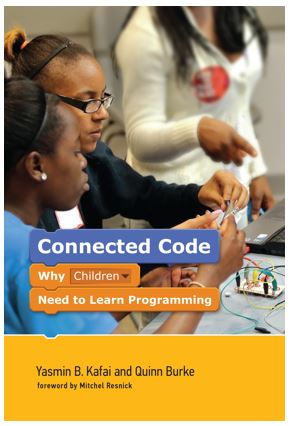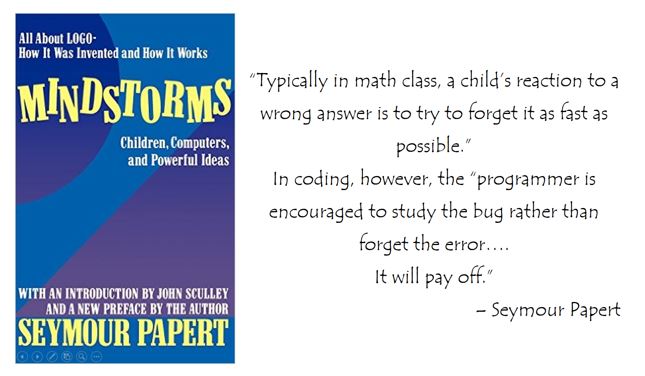What a week for Ontario educators! I was excited to hear the recent announcement by Minister Mitzie Hunter about the support for Computational Thinking in the classroom and the momentum that’s building around coding across the curriculum in Ontario.
I’m sure that many educators are now feeling more empowered and eager than ever to code in their classrooms. While participating in the Hour of Code, teachers likely witnessed students fully engaged in learning the basics of coding while being challenged to think through well-written online tutorials and apps. What they observed was students using coding as a context for developing their Computational Thinking skills.
Many wonderful articles have been written about what Computational Thinking is and research has shown it to be a “powerful cognitive skill that can have a positive impact on other areas of children’s intellectual growth” (Horn, Crouser, & Bers, 2013). If we really value Computational Thinking as individual educators and as a province, however, we need to capitalize on this momentum in order to provide our students with greater access and opportunities. Now that the Hour of Code has given you a glimpse of coding’s potential, it’s time to explore and learn along side students while continuing your journey…
I see the Ministry of Education announcement as an opportunity to empower teachers, principals, coordinators, superintendents and directors to search for the best ways to support students. Educators can now look for ways to further implement Computational Thinking into their classrooms and across disciplines, which will help students to make important connections and apply their understanding in meaningful ways. It will also enhance the potential for students to collaboratively create, empathize with end users’ needs and wants, and share their programs with others before iterating. The design process will be alive and well in Ontario schools! In Connected Code: Why Children Need to learn Programming, Kafai and Burke (2014) describe this other important aspect as “Computational Participation”, where students not only think, but create, share and connect with others.
to empower teachers, principals, coordinators, superintendents and directors to search for the best ways to support students. Educators can now look for ways to further implement Computational Thinking into their classrooms and across disciplines, which will help students to make important connections and apply their understanding in meaningful ways. It will also enhance the potential for students to collaboratively create, empathize with end users’ needs and wants, and share their programs with others before iterating. The design process will be alive and well in Ontario schools! In Connected Code: Why Children Need to learn Programming, Kafai and Burke (2014) describe this other important aspect as “Computational Participation”, where students not only think, but create, share and connect with others.
So what’s next?
As educators build on their Hour of Code initiatives, there are many ways to proceed and many considerations for next steps related to the integration of coding and Computational Thinking in our classrooms.
I would encourage educators to look for opportunities to attend well-designed workshops on coding, particularly ones where integration into and spiraling of current curriculum is emphasized, creativity is valued and participants are challenged with hands-on activities to the point where it is “…hard fun” (Papert, 1980). The quality of such workshops can vary,-generally you should seek out presenters who have experience as educators, and who have been coding with students in their own classrooms.
I would also encourage educators to explore sandbox-type applications for cod ing, which allow for greater creativity on the part of our students. Tutorials are a great starting point, but it isn’t until students are creating their own algorithms and programs that they are truly engaged in authentic learning. Remixing programs created by others and encouraging students to value the debugging process as a learning opportunity will no doubt support students across all subject areas. Students are naturally motivated to fix their errors, support each other with finding the source of mistakes and it becomes a celebratory experience when they succeed.
ing, which allow for greater creativity on the part of our students. Tutorials are a great starting point, but it isn’t until students are creating their own algorithms and programs that they are truly engaged in authentic learning. Remixing programs created by others and encouraging students to value the debugging process as a learning opportunity will no doubt support students across all subject areas. Students are naturally motivated to fix their errors, support each other with finding the source of mistakes and it becomes a celebratory experience when they succeed.
 Teachers and parents often inquire about what the best tools are for learning to code…
Teachers and parents often inquire about what the best tools are for learning to code…
I want to emphasize the fact that it’s not necessarily about the tool,-it’s how you use it for learning that matters most. I do, however, see some tools as being more effective than others for learning how to code. I’ve included a list here:
Micro:bit (huge potential and being distributed in Canada soon!)
You can create anything you want through coding,-you can code art, music, choose your own adventure stories and even program your computer to do your math homework for you! Teachers who have empowered students with coding activities begin to see something special take place almost immediately. There is a higher level of thinking that naturally occurs, students begin to appreciate the value of iteration and there seems to be a continuum of challenging opportunities for all levels of readiness and interest, resulting in true engagement. With persistence, an emphasis on pedagogy and providing opportunities for students to program solutions to real-world problems, teachers will see a positive shift in their classroom culture.

If you are feeling reluctant and apprehensive about coding in the classroom, just know that you are not alone! I encourage you to take the plunge, code with your students and don’t be afraid to reach out to others (including your own students) for assistance. After all, Dr. George Gadanidis of Western University’s Faculty of Education says it best: “…teaching is not about you or me, it’s about children and their wonderful minds” (Why Math + Code, 2015). Empower yourself and your students through the development and use of Computational Thinking skills within the context of coding. Just go for it!
References
Goodman, N. (2012). James Dyson on Using Failure to Drive Success. Retrieved December 11, 2016, from https://www.entrepreneur.com/article/224855
Horn, M. S., Crouser, J. R., & Bers, M. U. (2013). Tangible interaction and learning: the case for a hybrid approach. Personal and Ubiquitous Computing, 16(4), 379–389.
Kafai, Y. B., & Burke, Q. (2014). Connected code: Why children need to learn programming. Cambridge, MA: The MIT Press.
Papert, Seymour. (1980) Mindstorms: Children, computers, and powerful ideas. New York: Basic Books.
Why Math + Code? (2015). Retrieved December 11, 2016, from http://researchideas.ca/mc/article-1-title-recent-issue/interview-september/
And whats more: computational thinking in context can be challenging and fun for both teachers and students.
Thanks Lisa for including so many links for follow-up.
LikeLike